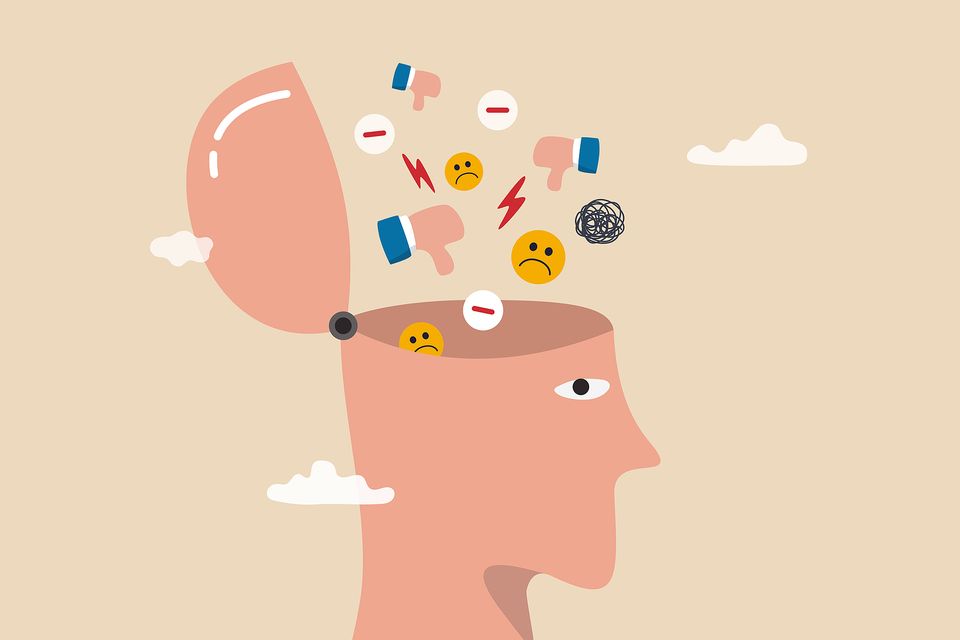The Psychology of Negative Thinking: How to Break the Cycle

Negative thinking is something we all experience from time to time. It's a natural response to the ups and downs of life.
However, when negative thoughts become the norm, they can have a significant impact on our mental health and well-being. In this blog post, we will delve into the science of negative thinking, explore its effects on our emotions, and provide practical strategies to develop a more mindful relationship with our thoughts.
By understanding and managing negative thinking, we can break the cycle and improve our mental well-being.
The Science of Negative Thinking:
Our thoughts and emotions are closely intertwined. When we're feeling content, our thoughts tend to reflect this positivity. However, during times of anxiety or unhappiness, negative thoughts can start to dominate our thinking.
Psychologist Aaron Beck introduced the concept of "negative schemas" in the 1970s, highlighting how negative thought patterns reinforce negative emotions. This endless loop of negativity can worsen our mental state and contribute to issues like social anxiety, low self-esteem, and even depression. Research also suggests a strong link between negative thinking and poor mental health, including low self-esteem and anxiety.
Breaking the Cycle: Principles of Managing Negative Thoughts:

To overcome negative thinking, we must first recognize it when it arises. Automatic negative thoughts often accompany poor mental health, and identifying them can take time.
Once we can recognize these thoughts, we can start to question their validity. Are they truthful or helpful?
If not, it's time to shift our focus and rewire our thought patterns. It's important to note that managing negative thinking involves transmuting our thoughts rather than simply replacing them with positive ones.
Practical Ways to Transmute Negative Thoughts:
Negative thought patterns can be deeply ingrained, but there are simple strategies we can employ to detach from them and reduce their impact on our emotions.
Here are three tangible ways to transmute negative thoughts:
1. Create distance from your thoughts:
Label your negative thoughts as subjective thoughts.
For example, say to yourself, "I'm having the thought that I am no good at my job" or "I'm having the thought that I am all alone." By labeling our thoughts in this way, we detach from the critical inner voice and recognize that these thoughts may not reflect reality. Treat them as observations rather than absolute truths.
2. Start a thought diary:
Keep a thought diary where you jot down the date, time, triggering event, and resulting negative thought. This practice helps us understand the connection between external triggers and our internal beliefs.
By naming our emotions and thoughts, we gain clarity and can challenge the validity of our negative thinking patterns.
3. Use de-catastrophizing techniques:
Negative thinking often leads to catastrophizing, where we blow things out of proportion and expect the worst-case scenario.
De-catastrophizing involves asking yourself specific questions to gain perspective:
- What am I worried about?
- Is it likely that my worry will come true?
- What is the worst that could happen if my worry did come true?
- If my worry comes true, what is most likely to happen?
- Despite my worry, am I likely to be okay in the long run?
By answering these questions, we can challenge our negative thoughts and regain a more balanced perspective.
Reflection Questions:
- Have you noticed any recurring negative thoughts in your life? How do they impact your emotions?
- How can you apply the strategies mentioned (creating distance, using a thought diary, de-catastrophizing) to manage your negative thoughts?
- What steps can you take to develop a more mindful relationship with your thoughts and promote positive thinking in your daily life?
By engaging in these reflection questions and implementing the strategies provided, you can gain greater control over your negative thinking patterns and improve your mental well-being. Remember, breaking the cycle of negative thinking takes time and practice.
Be patient with yourself and celebrate small victories along the way.
By nurturing a more positive and mindful mindset, you can navigate life's challenges with resilience and a greater sense of inner peace. Keep thriving!